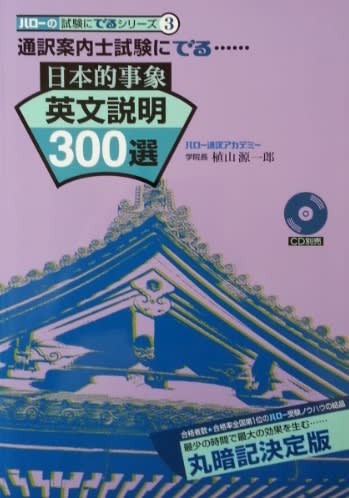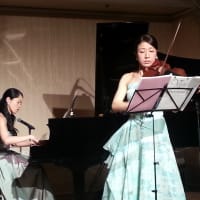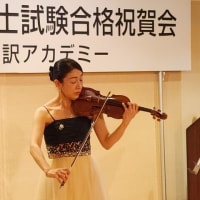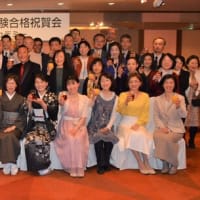
「日本的事象英文説明300選」パクリ事件の全貌
2017年度第1次筆記試験(英語)の【問題5】に、「次の用語(祇園祭、おでん、能)を英語で説明する場合、最も適切なものはどれか。それぞれ解答を一つ選びなさい」という問題が出題されましたが、その選択肢として用意された英文が、正解も含めてほとんどすべてが、拙著「日本的事象英文説明300選」からのパクリでした。
「300選」からは、毎年、第1次筆記試験、第2次口述試験に、何らかのかたちで出題されるのですが、これほどまでに「完璧にパクリ」をされたことは初めてでしたので、大変驚きました。
私以上に驚いたのは、「300選」を勉強していた受験者でした。
━━━━━━━━━━━━━
受験者の感想(一部)
━━━━━━━━━━━━━
●【問題5】は「日本的事象英文説明300選」からの丸写しでした。
「おでん」に至っては、一字一句まったくそのまま!(いくら何でもまずいと思わなかったのかな)
受験生にとってはありがたいので、著作権侵害で訴えないでください!(笑)。私は、「300選」は丸暗記していましたので楽勝でした。
●「日本的事象英文説明300選」の「祇園祭」「おでん」「能」がでました。書き方もほとんど同じで、直観的に「300選」から出たと思いました。
試験中にツッコミをいれたくなるほどで、お陰様でリラックスできました。
●「日本的事象英文説明300選」(祇園祭、おでん、能)がそのまま選択肢に出題されていました。読み慣れた文章だったので回答に自信が持てました。
●英語【問題5】は「日本的事象英文説明300選」がほぼ原文通り出題され、【問題5】は高得点を取れました。嬉しくて、試験中に涙が出ました。
●今回の【問題5】は、ズバリ「300選」からの出題(祇園祭、おでん、能)で驚きでした。
●【問題5】は、「300選」の「丸写し」でした。国家試験でも「丸写し」があるのですね。事前に勉強していてラッキーでした。(笑)
━━━━━━━━━━━━━━━━━━━━━━━
2017年度第1次筆記試験(英語)【問題5】
━━━━━━━━━━━━━━━━━━━━━━━
次の用語を英語で説明する場合、最も適切なものはどれか。
●「祇園祭」
①It is one of the three great festivals of Kyoto. It takes place at Shimogamo-jinja and Kamigamo-jinja on May 15. The name of the festival comes from the leaves of hollyhock that are used to decorate the heads of the participants in the procession.
②It is a dance performance with a history of more than 130years in Kyoto. Geiko and maiko perform traditional dances at the theater in Gion throughout the month of April.
③It is held in honor of Yasaka-jinja and is one of the three great festivals of Kyoto. It is held throughout the month of July and its highlight is the Yama Hoko Junko grand procession.
④It takes place at Yuki-jinja on October 22. Fires are lit at once from 6 p.m. at the signal of the ritual manager. Participants walk along in procession carrying flaming torches.
⑤It is one of the three great festivals of Kyoto. It is held in honor of Heian-jingu in October. Its highlight is a procession of people dressed in costumes representing various periods of Kyoto's 1,100-year history.
→正解は③
●「おでん」
①It is a dish of thinly sliced beef cooked in a special pan with vegetables such as onions, tofu, shiitake mushrooms and other ingredients. This dish is cooked at the table in a broth of soy sauce, sugar, and sake. The cooked materials are dipped in raw egg before eating.
②It is a dish of thinly sliced beef or pork and vegetables cooked in a pan. The ingredients are quickly boiled in broth, and then eaten after being dipped in a special sauce.
③It is a dish of a variety of ingredients, such as meat, fish, and vegetables cooked at the table in a large pot. It is famous as the sumo wrestlers' dish.
④It is a cuisine in which tofu is placed in hot water flavored lightly with kelp and eaten while it is kept hot in the pot. The tofu is eaten after dipping in a soy sauce based marinade along with finely-chopped chives and a spice.
⑤It is a dish in which a variety of ingredients such as eggs, white radish, fried fish paste are boiled together in a soy sauce based broth. Hot mustard is served as a condiment.
→正解は⑤
●「能」
①It is a genre of ancient ceremonial music and dances of the Imperial Court. Its performance styles include instrumental music, accompanied dance, and accompanied songs. Its venue includes religious rites of both Buddhist temples and Shinto shrines.
②It is a traditional stage art which first developed as an interlude for more serious plays. It features comical stories reflecting everyday conditions of life.
③It is a traditional stage drama performed by male actors to the accompaniment of songs and music. It is characterized by exaggerated make-up, elaborate costumes, sophisticated stage sets, and a runway that extends into the audience.
④It is a traditional dramatic art performed mostly by men to the accompaniment of distinctive narrative chants. It is characterized by highly stylized acting, the masks that the actors wear, elaborate costumes, and simple stage sets.
⑤It is a traditional puppet play performed to the accompaniment of narrative ballads. It is characterized by the closely collaborative form by skillful manipulation of puppets, narrative recitation, and shamisen music.
→正解は④
●実際の問題は下記をご覧ください。
http://hello.ac/2017english.pdf
━━━━━━━━━━━━━━━━━━━━━━━
「祇園祭」の選択肢の分析
━━━━━━━━━━━━━━━━━━━━━━━
●正解は、③ですが、これは、「300選」の「祇園祭」と非常によく似たものでした。
③It is held in honor of Yasaka-jinja and is one of the three great festivals of Kyoto. It is held throughout the month of July and its highlight is the Yama Hoko Junko grand procession.
→「300選」の「祇園祭」
Gion-matsuri, held in honor of Yasaka Shrine, is one of the three great festivals of Kyoto. Conducted throughout the month of July, it reaches its high point on the 17th with a parade of floats, some of which carry groups of musicians.
祇園祭は、八坂神社のために催される祭であるが、京都三大祭の一つである。7月いっぱい行われているが、山車の行列が見られる17日に最高潮に達する。山車の中には、囃子方を乗せたものもある。
●「選択肢」①の「葵祭」
①It is one of the three great festivals of Kyoto. It takes place at Shimogamo-jinja and Kamigamo-jinja on May 15. The name of the festival comes from the leaves of hollyhock that are used to decorate the heads of the participants in the procession.
→「300選」の「葵祭」
Aoi-matsuri, held in honor of the two Kamo Shrines, is one of the three great festivals of Kyoto. The festival is held on May 15. The name of the festival comes from the leaves of the aoi (hollyhock) plant that are used to decorate the heads of the participants in the procession.
葵祭は2つの賀茂神社のために催される祭で、京都三大祭の一つである。葵祭は5月15日に行われる。祭の名称は、行列の参加者の頭部を飾るのに用いられる葵の葉に由来する。
●「選択肢」⑤の「時代祭」
⑤It is one of the three great festivals of Kyoto. It is held in honor of Heian-jingu in October. Its highlight is a procession of people dressed in costumes representing various periods of Kyoto's 1,100-year history.
→「300選」の「時代祭」
Jidai-matsuri, or "Festival of the Ages," is held in honor of Heian Shrine and is one of the three great festivals of Kyoto. The festival is held on October 22, and its highlight is a procession of people dressed in costumes representing various periods of Kyoto's 1,200-year history.
時代祭は「時代の祭典」であるが、平安神宮のために催される祭で、京都三大祭の一つである。時代祭は10月22日に行われ、見ものは、京都に都が置かれていた1,200年間の様々な時代を象徴する衣装をまとった人々の行列である。
━━━━━━━━━━━━━━━━━━━━━━━
「おでん」の選択肢の分析
━━━━━━━━━━━━━━━━━━━━━━━
●正解は、⑤ですが、これは、「300選」の「おでん」とほとんど同じでした。
⑤It is a dish in which a variety of ingredients such as eggs, white radish, fried fish paste are boiled together in a soy sauce based broth. Hot mustard is served as a condiment.
→「300選」の「おでん」
Oden is a dish in which a variety of ingredients such as tofu, eggs, white radish, fried fish paste, and potatoes are boiled together in a large pot of seasoned fish broth. Hot mustard is served as a condiment.
おでんは、豆腐、卵、大根、さつま揚げ、じゃがいもなどの様々な材料を、味をつけた魚のだしが入った大鍋で一緒に煮込んだ料理である。からしが薬味として出される。
●「選択肢」①の「すきやき」
①It is a dish of thinly sliced beef cooked in a special pan with vegetables such as onions, tofu, shiitake mushrooms and other ingredients. This dish is cooked at the table in a broth of soy sauce, sugar, and sake. The cooked materials are dipped in raw egg before eating.
→「300選」の「すきやき」
Sukiyaki is a dish of thinly sliced beef, onions, tofu, and shiitake mushrooms cooked in a pan at the table. Sugar, soy sauce, and sake are added for flavor.
すきやきは、薄切りの牛肉、タマネギ、豆腐、椎茸を食卓に置いた鍋で煮た料理である。味付けには、砂糖、醤油、酒が加えられる。
●「選択肢」②の「しゃぶしゃぶ」
②It is a dish of thinly sliced beef or pork and vegetables cooked in a pan. The ingredients are quickly boiled in broth, and then eaten after being dipped in a special sauce.
→「300選」の「しゃぶしゃぶ」
Shabu-shabu is a dish of thinly sliced beef and vegetables cooked in a pan. The ingredients are quickly boiled in broth, and then eaten after being dipped in a special sauce.
しゃぶしゃぶは、薄切りの牛肉と野菜を鍋で煮た料理である。具はだし汁で素早く煮て、特製のたれをつけてから食べる。
●「選択肢」③の「ちゃんこ鍋」
③It is a dish of a variety of ingredients, such as meat, fish, and vegetables cooked at the table in a large pot. It is famous as the sumo wrestlers' dish.
→「300選」の「ちゃんこ鍋」
Chanko-nabe is famous as a sumo wrestler's dish. A variety of ingredients, such as meat, fish, and vegetables, are cooked at the table in a large pot.
ちゃんこ鍋は力士の料理としてよく知られている。肉、魚、野菜などの様々な材料が食卓に置かれた大鍋で煮られる。
━━━━━━━━━━━━━
「能」の選択肢の分析
━━━━━━━━━━━━━
●正解は、④ですが、これは、「300選」の「能」とほとんど同じでした。
④It is a traditional dramatic art performed mostly by men to the accompaniment of distinctive narrative chants. It is characterized by highly stylized acting, the masks that the actors wear, elaborate costumes, and simple stage sets.
→「300選」の「能」
Noh is a classical stage art performed mostly by men to the accompaniment of recitative chants called yokyoku and an orchestra consisting of a flute and three types of drums. It is characterized by symbolic, highly stylized acting, and elaborate masks.
能は、謡曲と呼ばれる語り唄、ならびに、笛と3種の太鼓からなる囃子方に合わせて、ほとんど男性だけによって演じられる古典舞台芸術である。能は、象徴的かつ高度に様式化された演技と精巧な面が特徴である。
●「選択肢の①の「雅楽」
①It is a genre of ancient ceremonial music and dances of the Imperial Court. Its performance styles include instrumental music, accompanied dance, and accompanied songs. Its venue includes religious rites of both Buddhist temples and Shinto shrines.
→「300選」の「雅楽」
Gagaku is a genre of the ancient ceremonial dances and music of the Imperial Court. The term bugaku refers to the dances, while kangen refers to the music performed by an ensemble of wind, string, and percussion instruments.
雅楽は、宮廷における古代の儀式で演じられた舞踊と音楽の一ジャンルである。舞楽という用語は舞踏を指し、他方、管弦は、管楽器、弦楽器、打楽器の合奏によりなされる音楽を指す。
●「選択肢」②「狂言」
②It is a traditional stage art which first developed as an interlude for more serious plays. It features comical stories reflecting everyday conditions of life.
→「300選」の「狂言」
Kyogen is a traditional comic or mime drama which reflects everyday conditions of life. In addition to being performed between the works of a Noh program as an interlude, it is also performed in its own right.
狂言は、日々の生活のありさまを反映させた、伝統的な喜劇や道化芝居である。狂言は、幕間劇として能の演目と演目の間に上演される他に、独立した演劇としても上演される。
●「選択肢」③の「歌舞伎」
③It is a traditional stage drama performed by male actors to the accompaniment of songs and music. It is characterized by exaggerated make-up, elaborate costumes, sophisticated stage sets, and a runway that extends into the audience.
→「300選」の「歌舞伎」
Kabuki is a traditional stage drama performed exclusively by men to the accompaniment of songs and music.It is characterized by a combination of rhythmical words, dancing, elaborate costumes, and stage sets.
歌舞伎は、男性だけによって歌や音楽に合わせて演じられる伝統的な舞台劇である。歌舞伎は、リズミカルな台詞、踊り、凝った衣装、舞台装置の組み合わせが特徴である。
●「選択肢」⑤「文楽」
⑤It is a traditional puppet play performed to the accompaniment of narrative ballads. It is characterized by the closely collaborative form by skillful manipulation of puppets, narrative recitation, and shamisen music.
→「300選」の「文楽」
Bunraku is a classical puppet play performed to the accompaniment of narrative ballads known as joruri. Its charm lies in the harmony of skilled puppeteers and the voices of the joruri singer.
文楽は、浄瑠璃として知られる、音楽を伴う語り唄に合わせて演じられる古典人形劇である。文楽の魅力は、熟達した人形遣いと浄瑠璃語りの唄声のハーモニーにある。
━━━━━━━━━━━━━━
観光庁の担当者のご意見
━━━━━━━━━━━━━━
2017年度第1次筆記試験実施直後に、「300選」の著者として、観光庁に電話をして、「パクられた事実」を報告したところ、ご担当者の方からは、下記のようなご意見をいただきました。
●観光庁の担当者のご意見
日本的事象を英文で説明する本は書店にあふれていますが、「日本的事象英文説明300選」は、その類の本としては、原典に相当する本であり、多くの本が、「300選」のすべて、または、一部を転載してきているので、本国家試験においても、「300選」に酷似した英文が出題されたことは、特別のこととは思っておりません。
●私の見解
観光庁の担当者のご意見もごもっともですので、私は著作権法違反などで訴えるような、大人げないことはしないことにしました。
━━━━━━━━━━━━━━━━━━━━━━━
「日本的事象英文説明300選」の出題実績
━━━━━━━━━━━━━━━━━━━━━━━
通訳案内士試験受験者のバイブル「日本的事象英文説明300選」からは、毎年、第1次筆記試験、第2次口述試験に出題されています。
●「300選」からの出題実績(キレイに印刷できます)
http://hello.ac/2ji.300sen.pdf
・凡例:( )内は、出題された年度、(1次/2次)別、(逐次通訳/プレゼンテーション)別を示します。
【地理・歴史】
日本の気候
梅雨(2007年2次)(2010年2次)
台風(2007年2次)
古墳(2014年2次通訳)(2015年2次通訳)
縄文文化
弥生文化
埴輪
朝廷
将軍(2006年2次)(2007年2次)
幕府(2010年1次ドイツ語)(2013年1次英語)
大名(2008年2次)
侍(2013年2次プレゼン)
武士道
鎖国(2012年2次)(2014年2次通訳)
踏絵
寺子屋
浪人
君が代
【観光】
新幹線(2013年2次通訳・プレゼン)
旅館(2013年2次プレゼン)
民宿
ビジネスホテル
ペンション
カプセルホテル
芸者(2012年1次ポルトガル語)
日光
箱根(2008年2次)
富士山(2006年2次)(2012年2次)(2013年2次プレゼン)
熱海
鎌倉
広島
青函トンネル
京都(2008年2次)(2010年2次)
奈良(2008年2次)
阿蘇山
松島(2014年2次通訳)
天橋立(2014年2次通訳)
宮島(2014年2次通訳)
後楽園
兼六園
偕楽園
【料理】
天ぷら
緑茶
抹茶
すきやき(2017年1次英語)
にぎり鮨
海苔巻
回転寿司(2017年2次プレゼン)
刺身(2017年2次プレゼン)
酢の物
しゃぶしゃぶ(2013年1次ドイツ語)(2017年1次英語)
お節料理(2015年1次独語)(2015年2次通訳)(2017年2次プレゼン)
懐石料理(2015年2次プレゼン)
焼鳥(2013年1次イタリア語)
おでん(2017年1次英語)
かば焼
茶わん蒸し
味噌
みそ汁
うどん
そば
そうめん
石焼きいも(2012年1次イタリア語)
酒(2008年2次)
焼酎(2008年2次)(2015年1次独語)
とそ
雑煮
もち
汁粉(2012年1次中国語)
精進料理(2015年2次プレゼン)
ちゃんこ鍋(2017年1次英語)
お茶漬(2015年2次プレゼン)
漬物
赤飯
丼物
牛丼
幕の内弁当
雑炊
佃煮
こんにゃく
かつお節
竹輪
かまぼこ
納豆(2016年2次プレゼン)
お好み焼き
たこやき(2015年1次ポルトガル語)(2017年2次プレゼン)
まんじゅう
ようかん
おはぎ
せんべい
立ち食いそば(2018年1次スペイン語)
屋台(2012年1次ドイツ語)
ファミリーレストラン
居酒屋(2013年1次イタリア語)(2013年2次プレゼン)
割箸
おしぼり
【伝統演劇・音楽】(2013年2次プレゼン)
落語(2015年1次独語)
尺八
歌舞伎(2009年2次)(2015年2次通訳)(2017年1次英語)(2018年1次ポルトガル語)
能(2017年1次英語)
狂言(2017年1次英語)
文楽(2009年2次)(2017年1次英語)
浄瑠璃
雅楽(2017年1次英語)
花道(2013年1次ロシア語)
黒衣(2012年1次ロシア語)
漫才
三味線
琴
琵琶
演歌(2007年2次)
【美術・工芸】
生け花
茶の湯(2010年2次)(2014年1次イタリア語)
書道
書き初め(2010年1次韓国語)
すずり
水墨画
浮世絵(2013年2次通訳・プレゼン)
菊人形
磁器(2014年1次英語)
陶器
漆器(2015年2次プレゼン)(2016年2次プレゼン)
七宝焼
西陣織
友禅
十二支
重要文化財
有形文化財
無形文化財(2013年1次フランス語)
日本庭園(2008年2次)(2010年1次タイ語)
枯山水(2012年1次ロシア語)(2018年1次イタリア語)
借景
石灯籠
盆栽(2009年2次)(2016年2次プレゼン)
俳句(2009年2次)(2012年1次英語)
和歌(2012年1次英語)
風呂敷(2013年1次英語)(2014年1次ドイツ語)
扇子(2014年1次スペイン語)(2015年2次通訳)
うちわ
こけし
招き猫(2009年2次)(2015年2次プレゼン)
折紙
千羽鶴(2017年2次プレゼン)
のし
根付
判子
【スポーツ・娯楽】
柔道
合気道(2016年2次プレゼン)
空手(2015年1次英語)
剣道
弓道
長刀
道場
相撲(2008年2次)(2017年2次プレゼン)
高校野球
ゲートボール
はねつき
たこあげ
将棋
碁
マージャン
パチンコ
カラオケ(2012年1次英語)
じゃんけん
【宗教】(2013年2次プレゼン)
神道(2012年2次)(2013年1次イタリア語)(2015年2次通訳)
仏教(2012年2次)(2013年1次イタリア語)
儒教
禅宗
座禅
神社(2007年2次)(2008年2次)(2016年2次プレゼン)(2017年2次プレゼン)
寺(2006年2次)(2007年2次)
鳥居(2006年2次)(2012年1次英語)
大仏
日本の塔
さいせん箱
だるま(2013年1次ドイツ語)(2018年1次英語)
大安
仏滅
檀家
釣鐘
数珠
木魚
観音
地蔵(2015年2次プレゼン)
お守り(2014年1次英語)
絵馬(2013年2次プレゼン)(2014年1次ドイツ語)(2017年2次プレゼン)
おみくじ(2018年1次イタリア語)
神輿
こま犬
しめ縄
七福神
稲荷神社
【文化行事・祝祭日】
正月(20010年2次)
締め飾り
門松(2015年1次ロシア語)(2015年1次スペイン語)(2017年2次プレゼン)
初夢
年賀状
お年玉(2013年1次英語)
初詣(2014年2次通訳)(2016年2次プレゼン)
新年会
成人の日(2012年1次ポルトガル語)(2015年1次イタリア語)
節分
雪祭
建国記念の日
ひな祭(2013年1次スペイン語)(2015年1次中国語:簡体字)(2016年2次プレゼン)
春分の日
みどりの日
憲法記念日
花見(2010年2次)(2015年1次ポルトガル語)
ゴールデンウィーク(2013年1次ドイツ語)
端午の節句
子供の日(2012年1次イタリア語)
こいのぼり(2017年2次プレゼン)
田植え
七夕
海の日
暑中見舞状
中元
お盆(2009年2次)(2016年2次プレゼン)
盆踊り(2012年2次)
敬老の日
秋分の日
彼岸(2015年2次プレゼン)
体育の日
月見
紅葉狩
文化の日(2016年2次プレゼン)
七五三(2009年2次)(2014年1次ドイツ語)(2016年2次プレゼン)
勤労感謝の日
天皇誕生日
歳暮(2017年2次プレゼン)
忘年会(2010年2次)(2015年1次イタリア語)
大晦日
年越しそば
除夜の鐘
国民の祝日
祇園祭(2013年2次通訳)(2017年1次英語)
時代祭(2017年1次英語)
葵祭(2017年1次英語)
昭和の日
【生活様式】
浴衣
はかま
はちまき
角隠し
紋付
着物(2006年2次)(2010年2次)(2015年2次通訳)
振袖(2010年1次韓国語)(2016年2次プレゼン)
帯
羽織
はっぴ
十二単衣(2012年1次ロシア語)
足袋
草履
下駄(2016年2次プレゼン)
日本髪
団地
玄関
障子
ふすま
畳
床の間
掛軸
屏風
のれん(2015年1次韓国語)(2015年2次プレゼン)
風鈴(2014年2次通訳)(2015年2次プレゼン)
ちょうちん(2016年2次プレゼン)
座布団
布団
お見合い
結納
仲人
三三九度
せんべつ
心中
家紋
宝くじ(2014年2次通訳)
歩行者天国
ビアガーデン
銭湯(2012年1次英語)(2015年2次プレゼン)
自動販売機
交番(2017年2次プレゼン)
【教育】
予備校
塾
日本の学校制度
修学旅行
ローマ字
漢字(2010年2次)
ひらがな(2010年2次)(2014年2次通訳)
かたかな(2014年2次通訳)
【ビジネス】
終身雇用(2010年1次フランス語)
年功序列(2018年1次ロシア語)
根回し
稟議
単身赴任
ボーナス
社宅
【日本人】
わび・さび
義理・人情(2009年2次)
本音・建前(2012年2次)
天皇(2013年1次タイ語)(2016年2次プレゼン)
━━━━━━━━━━━━━━━━━━━━━━━
第2次口述試験(全受験外国語共通)の出題実績
━━━━━━━━━━━━━━━━━━━━━━━
(1)接客ロボット、中山道、門松
(2)計画運休、鳴門海峡、お守り
(3)金の鯱鋒、海女さん、わさび
(4)漆塗り、道の駅、線状降水帯
(5)西九州新幹線、なまはげ、俳句
(6)佐渡金山、古民家、おみくじ
(7)床の間、中華街、恵方巻
(8)白河の関、たい焼き、グランピング
(9)杉玉、小笠原諸島、セルフレジ
(10)借景、竿燈祭り、赤飯
(11)麹、山寺、1人カラオケ
(12)大安吉日、うどん、豊洲市場
●2021年度(36題)
(1)犬山城、中秋の名月、国立競技場
(2)里山、七福神、わらびもち
(3)IR(統合型リゾート)、流鏑馬、南部鉄器
(4)酉の市、かっぱ巻き、五島列島
(5)彼岸、高齢者マーク、道後温泉
(6)五稜郭、森林浴、障壁画
(7)デジタル庁、城下町、七夕飾り
(8)三寒四温、出島、能面
(9)根付、鳥居、渋沢栄一
(10)摂関政治、落語、左団扇
(11)鰯雲、熱中症警戒アラート、三保松原
(12)特大荷物スペースつき座席、文明開化、流しそうめん
●2020年度(36題)
(1)春一番、ワーケーション、奥の細道
(2)大政奉還、免許返納、一汁三菜
(3)手締め、レジ袋有料化、駅伝
(4)サブスクリプション、鎖国、お食い初め
(5)小倉百人一首、梅雨、みんなのトイレ(多目的トイレ)
(6)一期一会、熊野古道、ラーメン
(7)新しい生活様式、高野山、入湯税
(8)熊手、黒部ダム、アマビエ
(9)敷金礼金、リモート飲み会、刺身のつま
(10)日本の感染症対策、飴細工、姫路城
(11)風致地区、神輿、除夜の鐘
(12)講談、マイナンバーカード、ゆず湯
●2019年度(36題)
(1)明治維新、おでん、ゴミの分別
(2)万葉集、まんじゅう、ラッシュアワー
(3)桜島、桃の節句、計画運休
(4)風鈴、消費税増税、道の駅
(5)百舌鳥古市古墳群、鯛焼き、メイドカフェ
(6)軽井沢、千羽鶴、テレワーク
(7)竿燈まつり、タピオカドリンク、気象警報
(8)金沢、ご当地(B級)グルメ、里山
(9)隠れキリシタン、卵かけご飯、宅配ボックス
(10)天橋立、味噌田楽、カプセルホテル
(11)阿蘇、お好み焼き、アニメやコミックの聖地巡礼
(12)ビアガーデン、分煙、国定公園
●2018年度(36題)
(1)正倉院、集団登下校、働き方改革
(2)鎌倉、無礼講、スクランブル交差点
(3)根回し、除夜の鐘、太陽光発電
(4)日光東照宮、灯籠流し、割り勘
(5)リボ払い、流鏑馬、猫カフェ
(6)元号、盆踊り、路上喫煙
(7)終活、うち水、食品サンプル
(8)琵琶湖、ししおどし、スタジオジブリ
(9)水引、鳥居、お花見
(10)神対応、三が日、グリーン車
(11)杉玉、賽銭箱、もんじゃ焼き
(12)リニアモーターカー、彼岸、知床
●2017年度(36題)
(1)交番、奥入瀬渓流、インスタ映え
(2)たこ焼き、伏見稲荷、待機児童問題
(3)絵馬、燗酒、シルバーウィーク
(4)前方後円墳、夏祭り、テレビ離れ
(5)宮内庁、満員電車、コミックマーケット
(6)神道、回転寿司、潮干狩り
(7)門松、大相撲、ちらし寿司
(8)厳島神社、割烹着、夏目漱石
(9)千羽鶴、ジンギスカン、民泊
(10)お刺身、お歳暮、一富士二鷹三茄子
(11)風呂敷、七草、ドローン
(12)おせち料理、鯉のぼり、桜前線
●2016年度(36題)
(1)盆栽、御朱印、ラムサ-ル条約
(2)下駄、おばんざい料理、日本の免税制度
(3)ひな祭り、日本の世界遺産、江戸城
(4)茶室の役割、厄年、国立西洋美術館
(5)川柳、日本の城の種類、人力車
(6)合気道、神社、日本の家庭
(7)お盆、江戸時代の身分制度、鏡開き
(8)天皇制度、高野山、日本の国立公園
(9)振袖、和紙、グリーンツーリズム
(10)初詣、七夕、文化の日
(11)納豆、七五三、お伊勢参り
(12)漆器、提灯、駅の自動改札
●2015年度(78題)
(1)招き猫、小京都、軍師
(2)札幌雪まつり、恵方巻き、日本の数字の数え方
(3)カプセルホテル、一万円札に描かれた人物、ゴールデンルート
(4)火祭り、お受験、仏像の種類と特徴
(5)のれん、家元制度、渋谷スクランブル交差点
(6)銭湯、書院造、出羽三山
(7)日本の湖、聖徳太子、一年を表す漢字
(8)西国三十三箇所、大奥、流行語大賞
(9)日本で人気のスポーツ、鍋料理、ししおどし
(10)合掌造り、金沢の名産品、坂本龍馬
(11)冬至、けん玉、街コン
(12)日本の城の種類とその特徴、鬼、日本のバレンタインデー
(13)お茶漬け、新撰組、日本の野生動物
(14)漆器、風林火山、田んぼアート
(15)お地蔵さん、立山黒部アルペンルート、徳川家康
(16)千円札に描かれた人物、地下足袋、道の駅
(17)忍者、神楽、日本の蒸気機関車
(18)日本のミュージカル、路面電車、卑弥呼
(19)金閣寺の構造、中山道、日本のアイドル
(20)高山祭、殺陣、東海道五十三次
(21)懐石料理、出雲大社、源氏物語
(22)おでん、日本人のくせ、ナマハゲ
(23)精進料理、棚田、打ち水
(24)風鈴、日本のハロウィン、血液型
(25)お彼岸、優先席、デパ地下
(26)横綱、付き出し、おすすめの日本のおみやげ
●2014年度(18題)
(1)初詣、明治維新、日本アルプス
(2)古墳、風鈴、日本の自然災害
(3)鎖国、日本三景、宝くじ
(4)厄年、高野山、日本における最大の木造建築
(5)ハッピーマンデー、黒船、北陸新幹線
(6)福袋、東海道五十三次、草津温泉の特徴と行き方
●2013年度(18題)
(1)旅館、浮世絵、東京が日本の他の地域と異なる点
(2)日本の宗教、温泉に入る時に気をつけること、日本の季節ごと見られる草花
(3)居酒屋、日本の伝統芸能、2011年の東日本大震災の最も被害を受けた地域とその現状について
(4)侍、日本で年末年始に行われること、日本でお勧めのスキ―場
(5)富士山、絵馬、19世紀の日本に起こった大きな変化について
(6)新幹線、江戸、東北の魅力的なスポット
━━━━━━━━━━━━━━━━━━━━
「日本的事象英文説明300選」購入方法
━━━━━━━━━━━━━━━━━━━━
https://blog.goo.ne.jp/gu6970/e/d9d3bc8532ae942e4731740961fb0993
以上

























